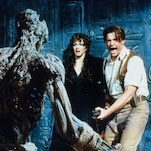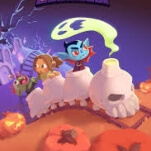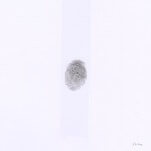NASA discovered the TRAPPIST-1 system not by spotting the planets themselves, but by analyzing data. Using NASA’s Spitzer Space Telescope, an infrared telescope orbiting about 370 miles above Earth’s surface, astronomers were able to track small dips in infrared light from the TRAPPIST-1 star. From that data they ascertained both the number of planets in the system as well as their size, distance from the star, orbital period, and mass. In other words, charting the system comes down to tracking shadows rather than observing planets. Here’s what the data actually looks like:
But as it often does when it wants to make an announcement more accessible to the general public, NASA commissioned artists to draw visual representations of the largely unknowable. In this case, two men were responsible for the TRAPPIST-1 drawings. Tim Pyle is a former animator who has worked on shows like Invader Zim, Jimmy Neutron, and SpongeBob SquarePants, while Robert Hurt is an astronomer with an interest in art. They’ve worked together in Caltech’s Infrared Processing And Analysis Center for 12 years, translating NASA data into comprehensible visuals.
After seeing the TRAPPIST-1 data, Pyle and Hurt created a “plausible model” of the planetary system, which was then vetted by other astronomers. The Atlantic article digs into the specific choices the duo made when it came to illustrating the look of each planet. Using celestial bodies in our own solar system as a guide, they determined which planets would be most likely to have water, which would be ice worlds, and which would be rocky. In the end the final images offer a mix of scientific accuracy and visual interest. You can learn much more about the process, including the role marbles played in it, over on The Atlantic.







































